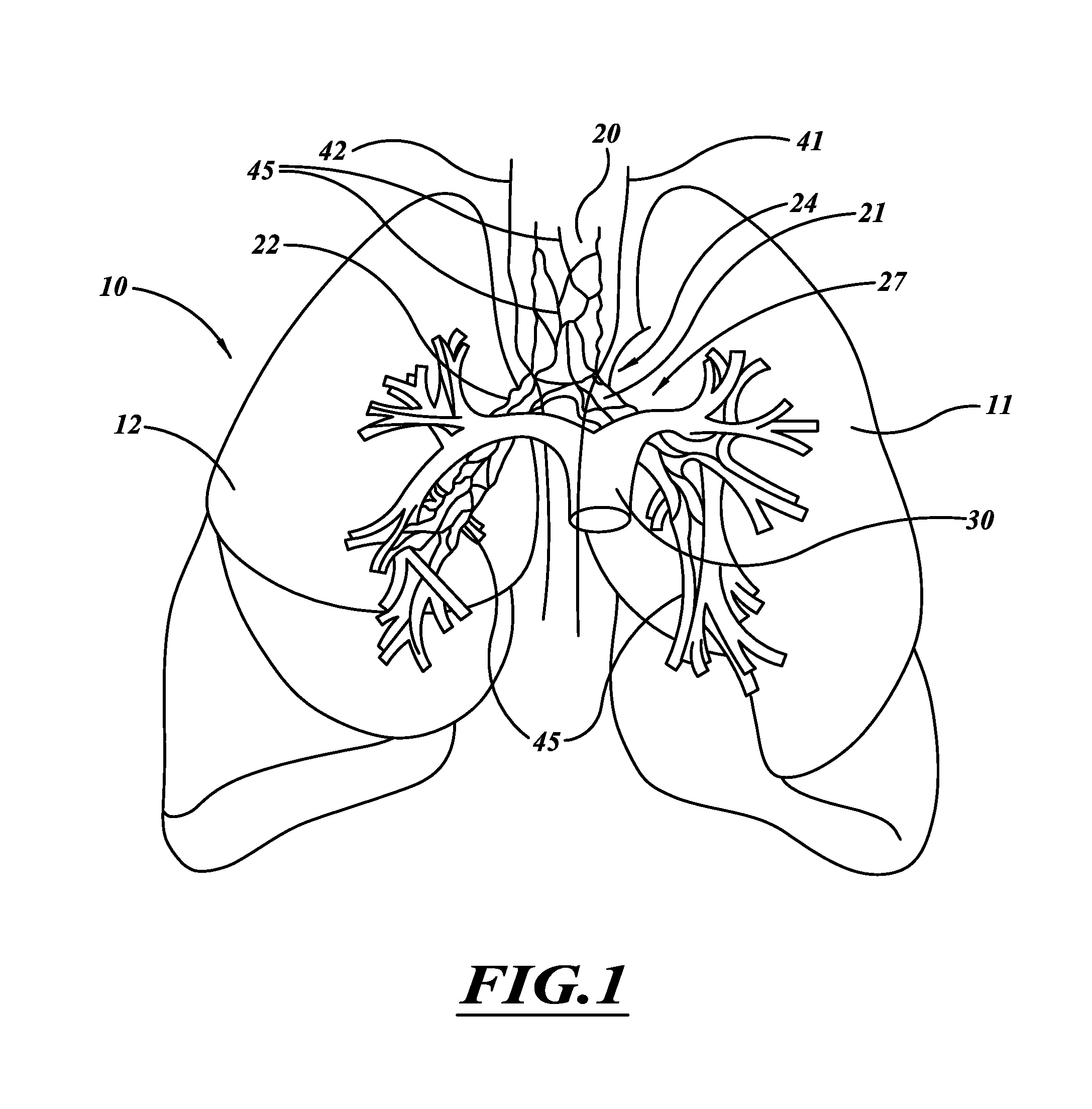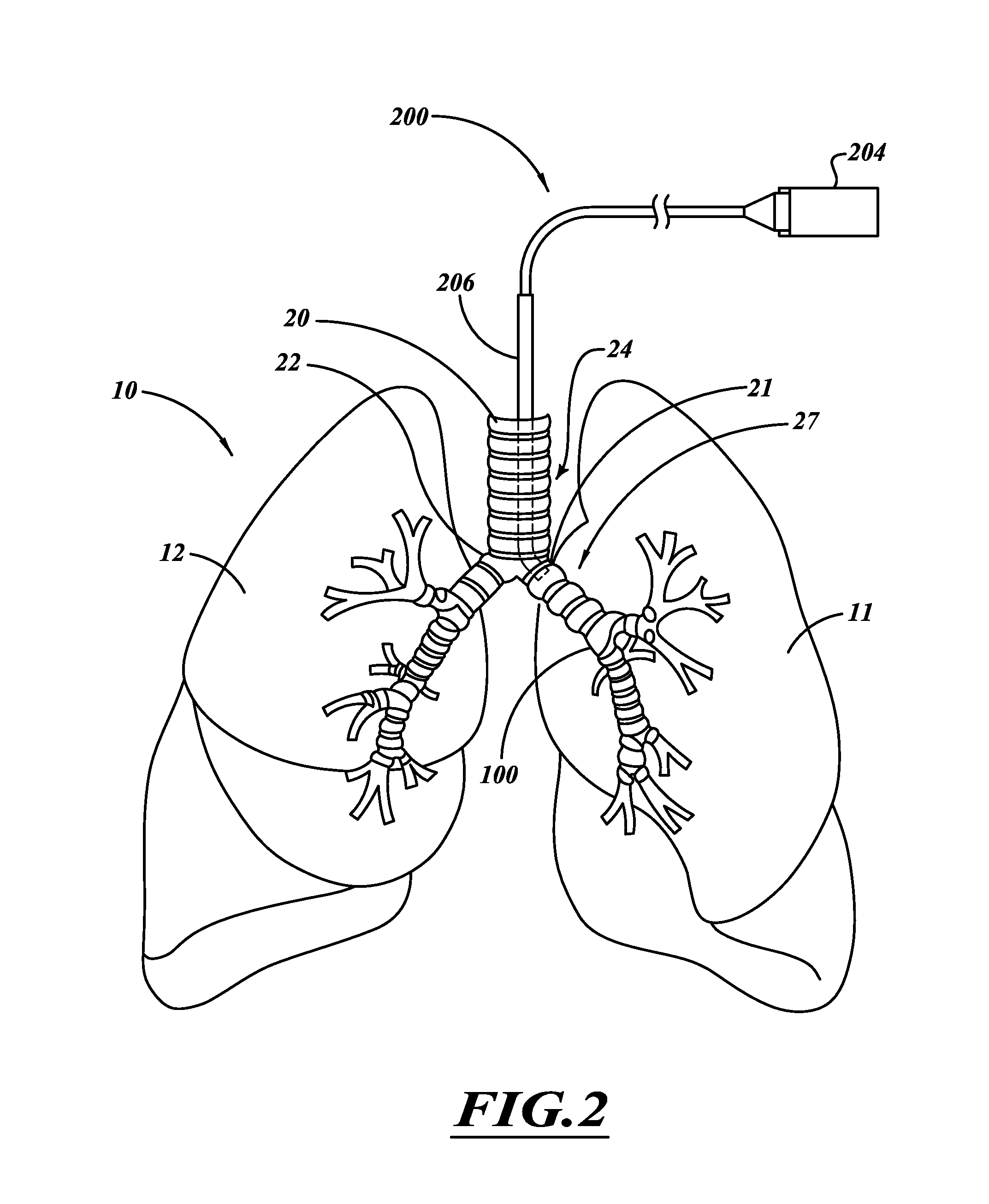Apparatus for injuring nerve tissue
a nerve tissue and apparatus technology, applied in the field of apparatuses and treatment systems for injuring nerve tissue, can solve the problems of adverse effects on the performance of the lung, adverse health effects, and the size of the population, and achieve the effect of increasing the effective size of the ablation element and increasing the effective electrode siz
- Summary
- Abstract
- Description
- Claims
- Application Information
AI Technical Summary
Benefits of technology
Problems solved by technology
Method used
Image
Examples
Embodiment Construction
[0067]FIG. 1 illustrates human lungs 10 having a left lung 11 and a right lung 12. A trachea 20 extends downwardly from the nose and mouth and divides into a left main bronchus 21 and a right main bronchus 22. The left main bronchus 21 and right main bronchus 22 each branch to form lobar, segmental bronchi, and sub-segmental bronchi, which have successively smaller diameters and shorter lengths in the outward direction (i.e., the distal direction). A main pulmonary artery 30 originates at a right ventricle of the heart and passes in front of a lung root 24. At the lung root 24, the artery 30 branches into a left and a right pulmonary artery, which in turn branch to form a network of branching blood vessels. These blood vessels can extend alongside airways of a bronchial tree 27. The bronchial tree 27 includes the left main bronchus 21, the right main bronchus 22, bronchioles, and alveoli. Vagus nerves 41, 42 extend alongside the trachea 20 and branch to form nerve trunks 45.
[0068]Th...
PUM
 Login to View More
Login to View More Abstract
Description
Claims
Application Information
 Login to View More
Login to View More - R&D
- Intellectual Property
- Life Sciences
- Materials
- Tech Scout
- Unparalleled Data Quality
- Higher Quality Content
- 60% Fewer Hallucinations
Browse by: Latest US Patents, China's latest patents, Technical Efficacy Thesaurus, Application Domain, Technology Topic, Popular Technical Reports.
© 2025 PatSnap. All rights reserved.Legal|Privacy policy|Modern Slavery Act Transparency Statement|Sitemap|About US| Contact US: help@patsnap.com



